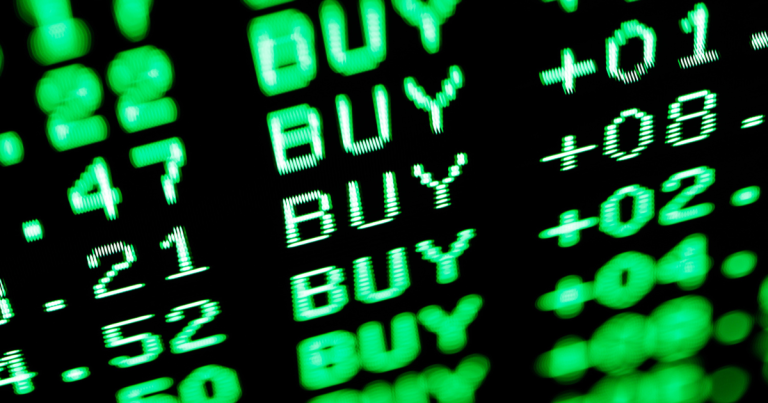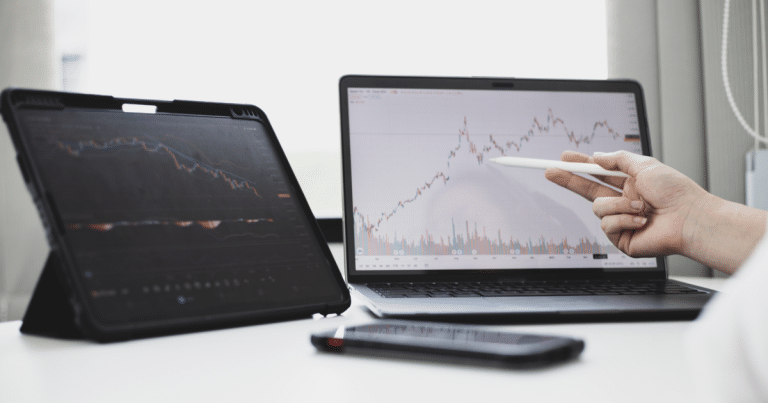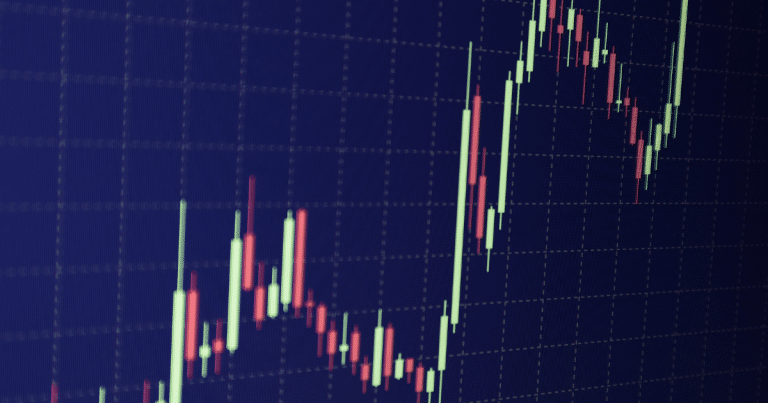
Getting the Hang of Moving Averages
What Are Moving Averages?
Moving averages are like the secret sauce in trading. They help you see the bigger picture by smoothing out those wild price swings. Think of them as your trusty sidekick, showing you the real direction of a stock, commodity, or market. There are two main types: Simple Moving Averages (SMA) and Exponential Moving Averages (EMA). Each has its own flavor and fits different trading styles.
| Type of Moving Average | What It Does |
|---|---|
| Simple Moving Average (SMA) | A basic average of prices over a set time, giving you a smooth line that’s not too jumpy. |
| Exponential Moving Average (EMA) | Puts more weight on recent prices, so it’s quicker to react to new info and trends. |
Why They Matter in Trading
Moving averages are a big deal in trading. They help you spot trends and figure out when things might turn around. Short-term averages are great for quick trades, while long-term ones are better if you’re in it for the long haul (Investopedia).
EMAs are often the go-to because they react faster to price changes, which is super handy in fast-moving markets. Traders usually pair moving averages with other tools like the Moving Average Convergence Divergence (MACD) to beef up their strategies. Want to dive deeper? Check out our articles on simple moving average vs exponential moving average and moving average trading strategies.
Besides spotting trends, moving averages can act like invisible barriers, showing you where to enter or exit trades. Common time frames are 20, 50, and 200 days, so you can tweak your strategy based on what’s happening in the market (Investopedia). Knowing how these averages work and when to use them is key if you want to get ahead in the stock market game.
Types of Moving Averages
Moving averages are like the Swiss Army knives of trading. They help traders spot trends and smooth out the noise in price data. There are three main types: Simple Moving Average (SMA), Exponential Moving Average (EMA), and Weighted Moving Average (WMA). Each one has its own quirks and uses.
Simple Moving Average (SMA)
The Simple Moving Average (SMA) is the granddaddy of moving averages. It’s calculated by averaging the prices of a security over a set number of days. Think of it as the “no-frills” option.
| Period (Days) | Closing Prices | SMA |
|---|---|---|
| 1 | 100 | 100 |
| 2 | 102 | 101 |
| 3 | 101 | 101 |
| 4 | 104 | 102.25 |
| 5 | 103 | 102 |
Traders who like to play the long game love the SMA. It smooths out the bumps and gives a clearer picture of long-term trends. For a closer look, check out our article on simple moving average vs exponential moving average.
Exponential Moving Average (EMA)
The Exponential Moving Average (EMA) is like the SMA’s cooler, more responsive cousin. It gives more weight to recent prices, making it quicker to react to market changes.
| Period (Days) | Closing Prices | EMA |
|---|---|---|
| 1 | 100 | 100 |
| 2 | 102 | 101 |
| 3 | 101 | 101.5 |
| 4 | 104 | 102.75 |
| 5 | 103 | 103.25 |
The EMA is a favorite for short-term traders and day traders. It rises faster when prices go up and drops quicker when they fall (Investopedia). For more on how to use EMAs in your trading, visit our page on exponential moving average crossover strategy.
Weighted Moving Average (WMA)
The Weighted Moving Average (WMA) is the Goldilocks of moving averages. It assigns different weights to prices, giving more importance to the most relevant data points. This helps reduce the lag you get with the SMA while still smoothing out the data.
| Period (Days) | Closing Prices | Weights | WMA |
|---|---|---|---|
| 1 | 100 | 1 | 100 |
| 2 | 102 | 2 | 101.33 |
| 3 | 101 | 3 | 101.67 |
| 4 | 104 | 4 | 102.67 |
| 5 | 103 | 5 | 103.33 |
WMAs strike a nice balance between the quick response of EMAs and the stability of SMAs. They’re great for traders who want to stay on top of trends without getting whipsawed by every little price move. For more on how to calculate WMAs, check out our article on weighted average calculation.
Knowing these moving averages can help you pick the right tool for your trading strategy, whether you’re chasing short-term gains or riding long-term trends.
Characteristics of SMAs, EMAs, and WMAs
Grasping the ins and outs of Simple Moving Averages (SMAs), Exponential Moving Averages (EMAs), and Weighted Moving Averages (WMAs) can give your trading game a serious boost. Each type has its own way of crunching numbers and reacting to price changes.
How They’re Calculated
The way each moving average is calculated makes a big difference in how they respond to market moves and what they tell you.
| Moving Average Type | How It’s Calculated |
|---|---|
| Simple Moving Average (SMA) | The SMA takes the average price over a set time period using basic math. For a 5-day SMA, you just add up the closing prices of the last 5 days and divide by 5. Easy peasy. |
| Exponential Moving Average (EMA) | The EMA puts more weight on recent prices, making it quicker to react to new info. The formula looks like this: Current EMA = [Closing Price – EMA (Previous Period)] x Multiplier + EMA (Previous Period) (Elearnmarkets). |
| Weighted Moving Average (WMA) | The WMA gives different weights to each price in the time period. In a 5-day WMA, the most recent price might get multiplied by 5, the next day by 4, and so on, down to 1 for the oldest price. |
Lag and Speed
How quickly these averages respond to price changes is key for traders.
Simple Moving Average (SMA): The SMA is a bit slow on the uptake because it treats all prices equally. This can make it lag when prices move fast.
Exponential Moving Average (EMA): The EMA is quicker on its feet, giving more weight to recent prices. It reacts faster to new market info, making it a favorite for spotting trends (Investopedia).
Weighted Moving Average (WMA): The WMA also responds to price changes but does so by giving different weights to past prices. It’s faster than the SMA but might not be as quick as the EMA when prices suddenly shift.
Knowing how these moving averages are calculated and how they react to price changes helps you pick the right one for your trading strategy. Want to dive deeper? Check out our articles on moving average trading strategies and exponential moving average crossover strategy.
Practical Uses of Moving Averages
Moving averages are like the Swiss Army knife of trading tools. They help spot trends and guide decisions, whether you’re in it for the quick gains or playing the long game.
Quick-Hit Trading Tactics
If you’re the type who likes to ride the waves of the market, moving averages can be your best friend. Short-term traders often lean on moving averages to catch those rapid price swings. The 8-day or 20-day Exponential Moving Average (EMA) are the go-to choices here. These guys are quick on the draw, reacting fast to price changes and giving you the heads-up when it’s time to jump in or bail out.
| Moving Average Type | Typical Duration | Use |
|---|---|---|
| 8-day EMA | Short-term | Spots quick trend shifts |
| 20-day EMA | Short-term | Tracks short-term trends |
One popular trick in the short-term trading playbook is the exponential moving average crossover strategy. This involves watching for a shorter EMA to cross above a longer EMA, signaling a buy. Intraday traders, who live on 15-minute or hourly charts, love the EMA for its quick reflexes.
Long-Haul Investment Plans
For those who prefer to take it slow and steady, longer-term moving averages are the way to go. The 50-day and 200-day EMAs are the heavyweights here, smoothing out the bumps and giving a clearer view of the long-term trends. These averages are less jumpy, helping you avoid knee-jerk reactions to short-term market noise.
| Moving Average Type | Typical Duration | Use |
|---|---|---|
| 50-day EMA | Long-term | Tracks medium-term trends |
| 200-day EMA | Long-term | Shows long-term market direction |
Long-term traders and analysts often go for the Simple Moving Average (SMA) on daily or weekly charts. The SMA is straightforward, averaging prices over a set period, making it easier to see the big picture.
Longer EMAs can also help spot potential support and resistance levels, guiding your decisions on when to enter or exit trades. Pairing these with other indicators like the moving average convergence divergence can give you an even sharper edge.
By weaving these moving averages into your trading game plan, you can better navigate the market’s ups and downs. Knowing when to use short-term versus long-term moving averages is crucial for building a solid strategy. For more in-depth tactics, check out our moving average trading strategies for some pro tips.
Advanced Moving Average Types
When it comes to trading, advanced moving averages like the Double Exponential Moving Average (DEMA) and the Triple Exponential Moving Average (TEMA) give traders sharper tools to analyze price trends. These moving averages are designed to cut down on lag and react faster to price changes, making them super handy for strategic trading.
Double Exponential Moving Average (DEMA)
The Double Exponential Moving Average (DEMA) is a step up from the Exponential Moving Average (EMA), putting more weight on the latest data points. This helps reduce lag, so DEMA can react quicker to market moves. It’s especially useful for short-term traders who need to spot trend reversals fast.
| Feature | Description |
|---|---|
| Calculation | DEMA is calculated using a mix of single and double EMAs. |
| Responsiveness | More responsive than standard EMAs due to reduced lag. |
| Ideal Users | Short-term traders looking for quick trend identification. |
If you’re into using DEMA, you can blend it with strategies like the exponential moving average crossover strategy to make better decisions.
Triple Exponential Moving Average (TEMA)
The Triple Exponential Moving Average (TEMA) was introduced by Patrick Mulloy in 1994. It’s a further evolution of DEMA, using a triple-smoothed EMA along with the standard and double-smoothed EMAs from DEMA’s calculation. This complex formula cuts lag even more, making TEMA super responsive to price changes.
| Feature | Description |
|---|---|
| Calculation | TEMA uses a formula that combines single, double, and triple EMAs. |
| Responsiveness | Offers superior responsiveness compared to both DEMA and EMA. |
| Ideal Users | Traders who need real-time analysis of market trends. |
Traders can use TEMA in various strategies, including moving average trading strategies, to sharpen their market analysis and execution.
Both DEMA and TEMA are big steps forward in understanding moving averages. By using these tools, traders can better respond to market trends and make smarter trading decisions.
Making the Most of Moving Averages
Moving averages are like the Swiss Army knife of trading tools. They can be super handy, but only if you know how to use them right. Let’s break it down so you can get the most out of them.
Watch Out for Common Mistakes
First off, moving averages aren’t magic. They can mess up big time in crazy volatile markets. Imagine trying to use a ruler to measure a bouncing ball—yeah, not gonna work. Moving averages can miss important stuff like cyclical patterns, leading you down the wrong path (Investopedia). So, don’t rely on them alone. Mix them up with other indicators and methods to get a clearer picture.
Your personal experience matters a lot here. What works for your buddy might not work for you. Trading strategies are like fingerprints—unique to each person (Investopedia).
Then there’s the big debate: Simple Moving Averages (SMA) vs. Exponential Moving Averages (EMA). Both have their perks. SMA is like the tortoise—steady and reliable over longer periods. EMA is the hare—quick and responsive, great for short-term trades. Neither is better; it all depends on your style and what the market’s doing (Investopedia).
Adding Moving Averages to Your Trading Toolbox
Using moving averages can really up your trading game. If you’re an intraday trader, the EMA is your best friend. It reacts faster to price changes, making it perfect for those quick, in-and-out trades on 15-minute or hourly charts.
On the flip side, if you like to play the long game, the SMA is your go-to. It’s great for daily or weekly charts and helps you spot trends over longer periods. You calculate it by adding up recent data points and dividing by the number of periods. You can apply it to different price types like high, low, open, and close (Elearnmarkets).
But don’t stop there. Combine moving averages with other tools like the moving average convergence divergence (MACD) or volume weighted average price (VWAP). This combo can help you dodge risks and make better trades.
By knowing the ins and outs of each type of moving average and using a well-rounded strategy, you can make smarter decisions that fit your trading style and the market conditions.








Moving averages are super useful for traders, but I’m still a bit confused about the different types. Any chance you could do a deeper dive into the different ones? Thanks!
this is a great introduction to moving averages. i’ve been trying to understand them for a while now, and this article really helped me to get it. thanks!
I’ve been using moving averages for a while, but I never really understood why they matter so much. This article helped me to understand the importance of moving averages in trading.
Ive been using SMAs for a while now and Im starting to get the hang of it Its definitely a helpful indicator but you gotta be careful how you use it
Nice article! I’m a beginner trader and this was really helpful.